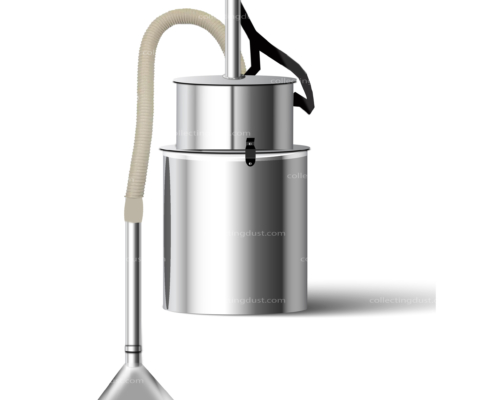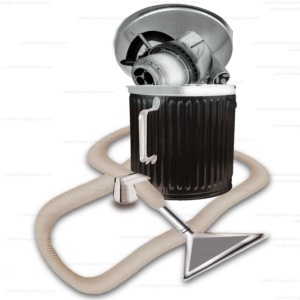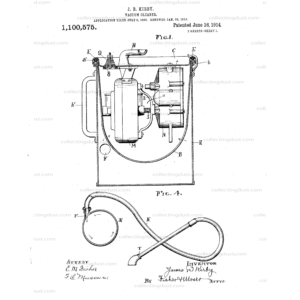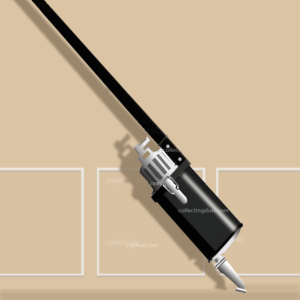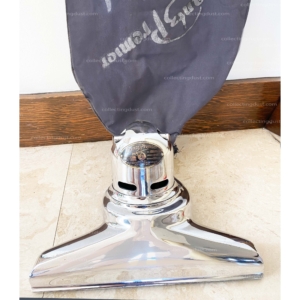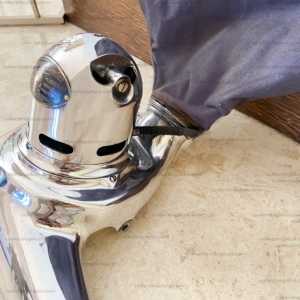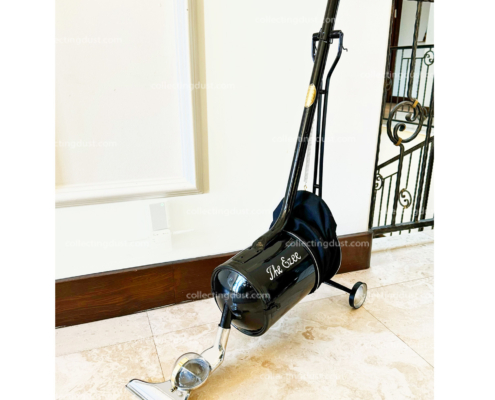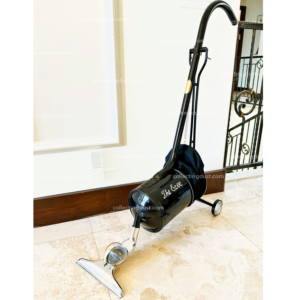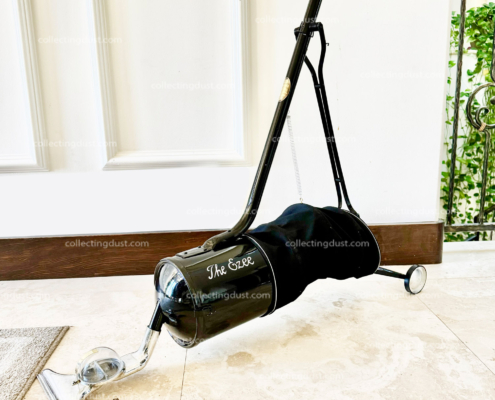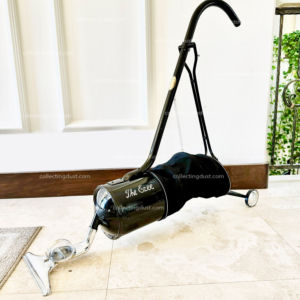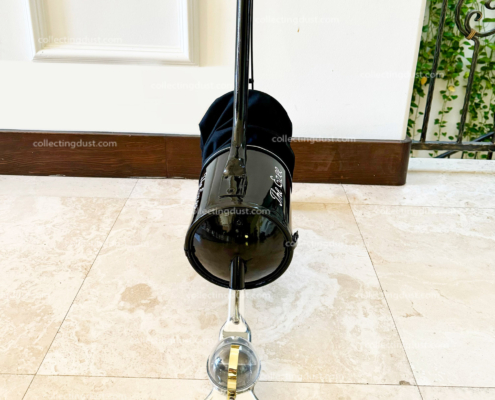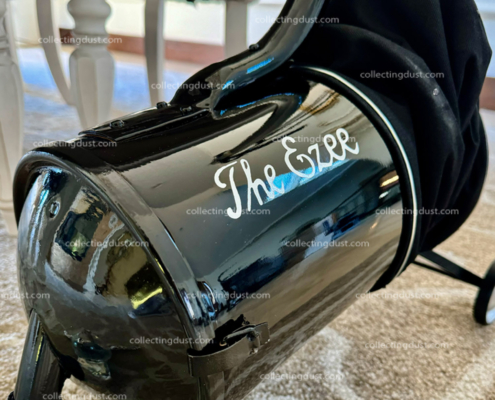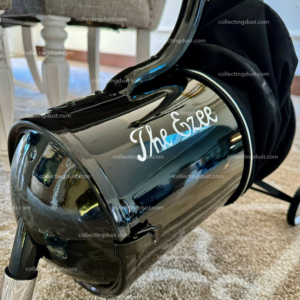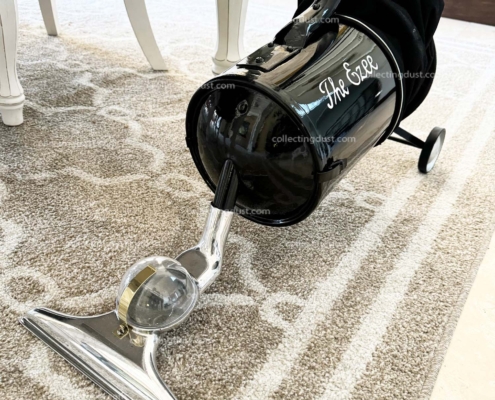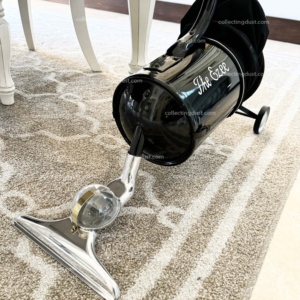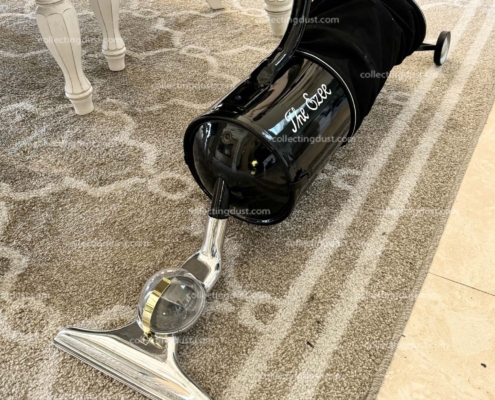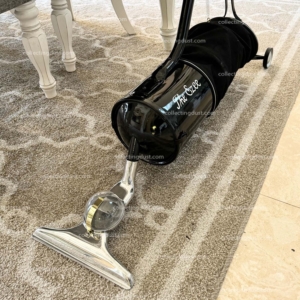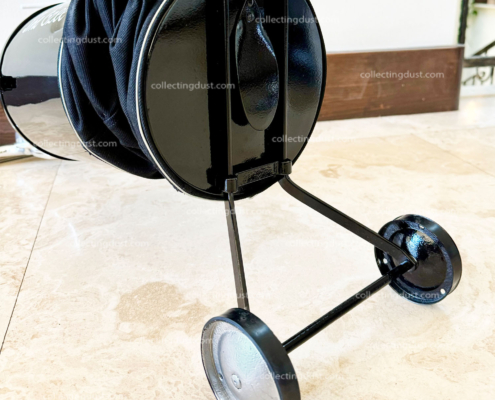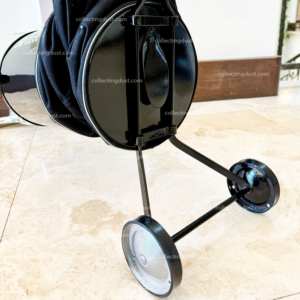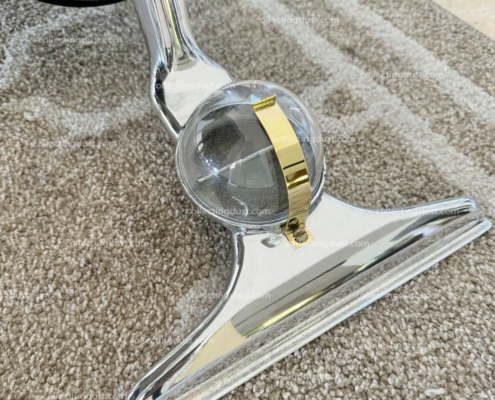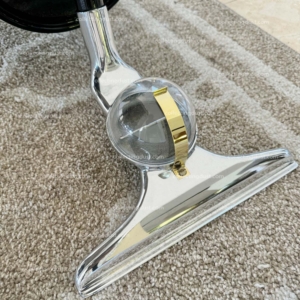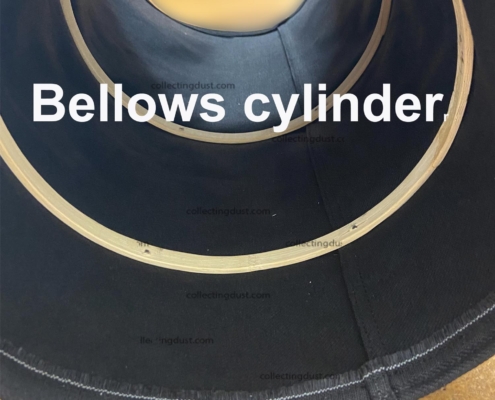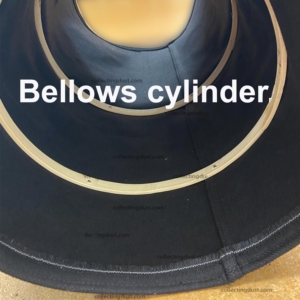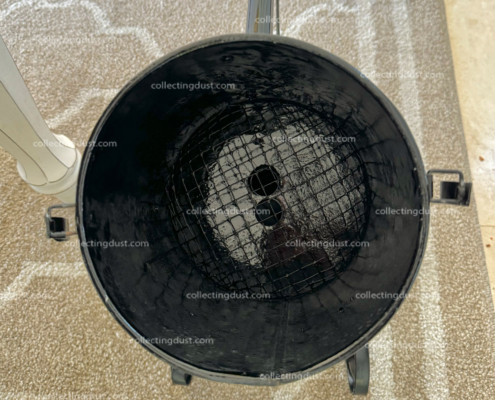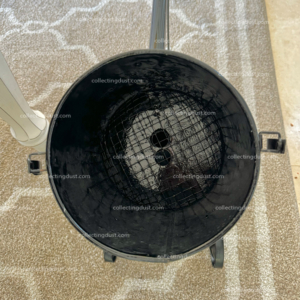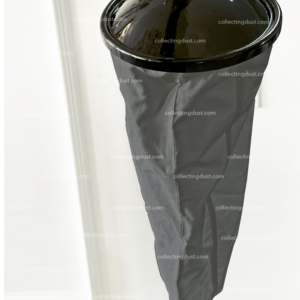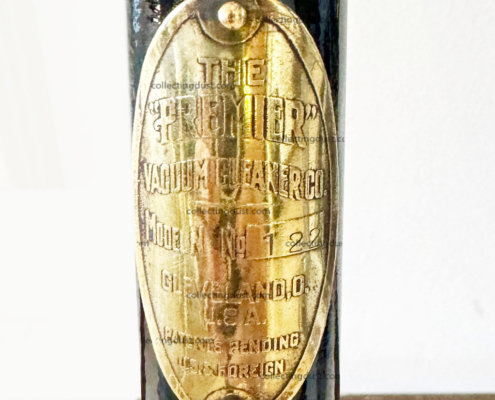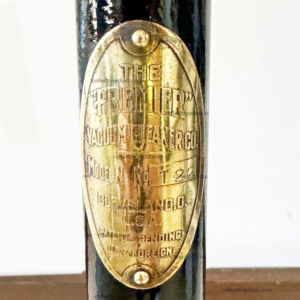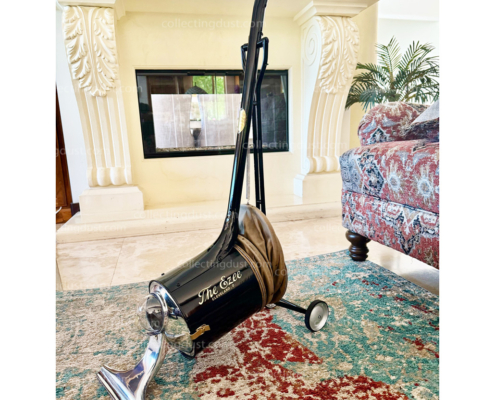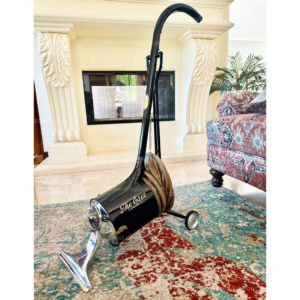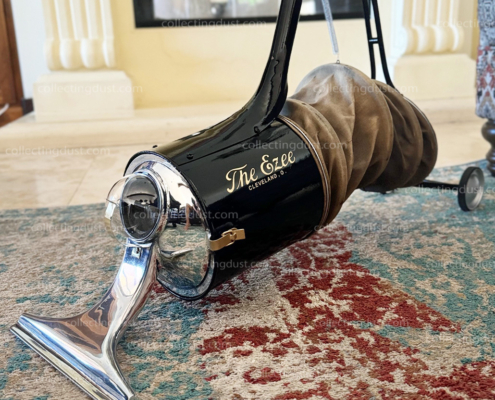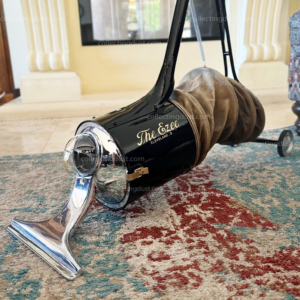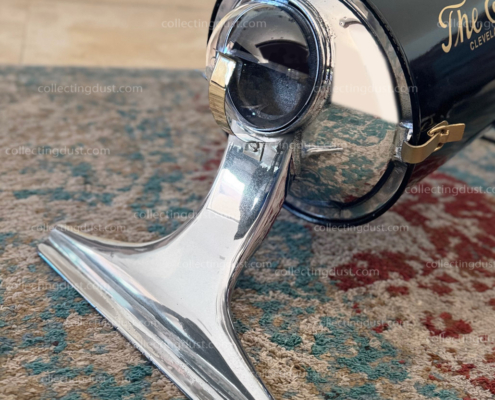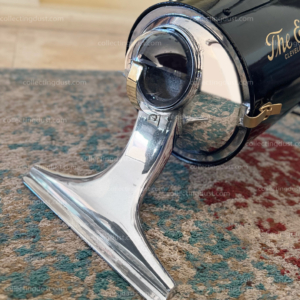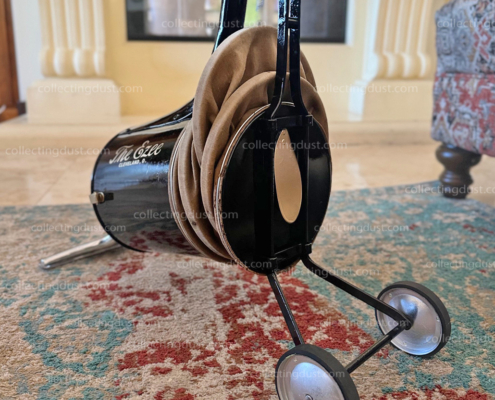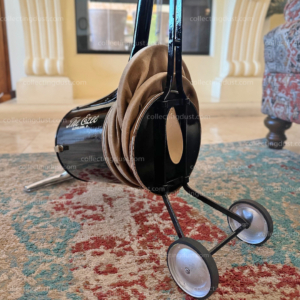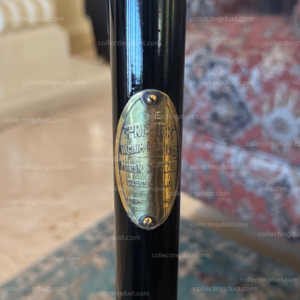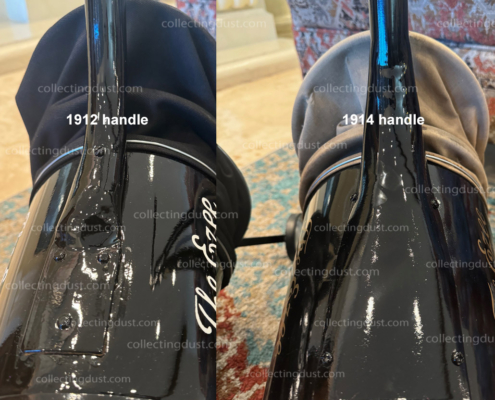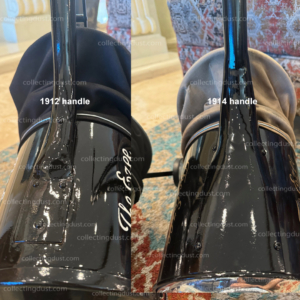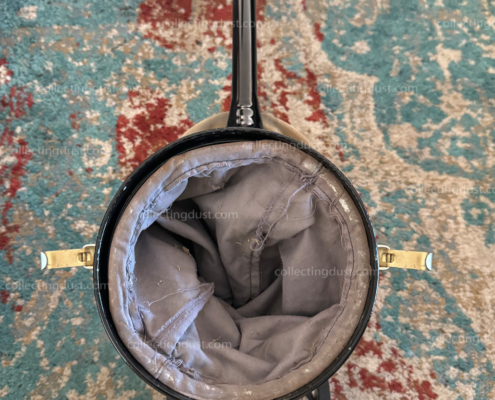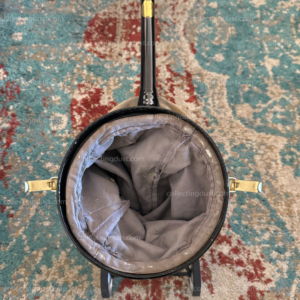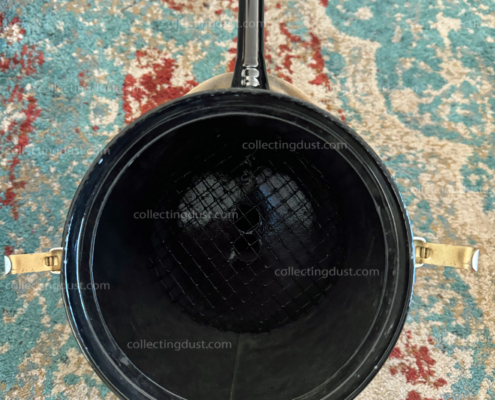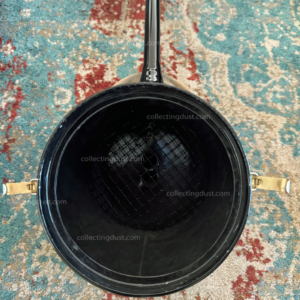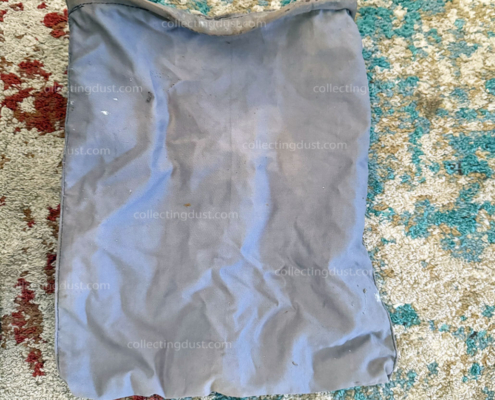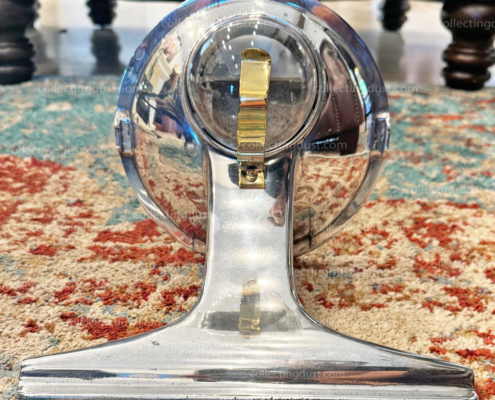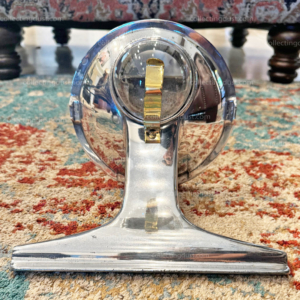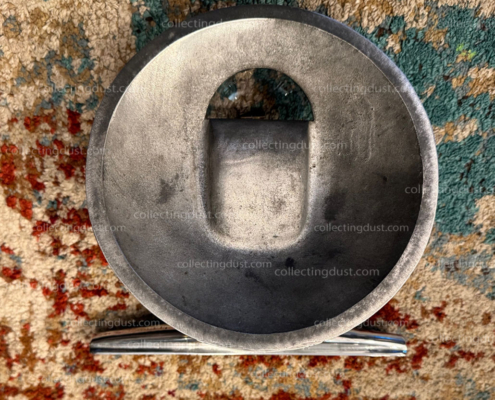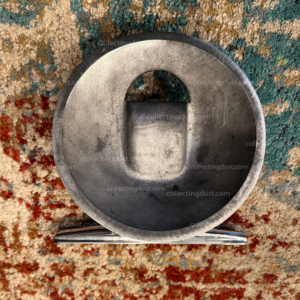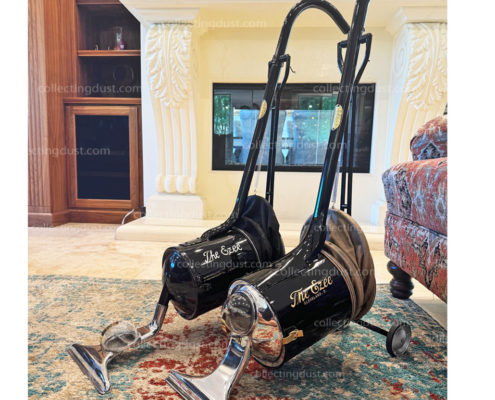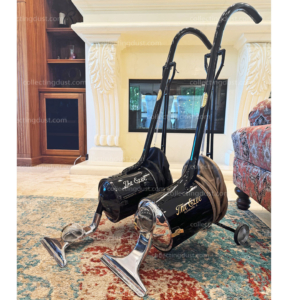Disclaimer : Kirby® is a registered trademark of Kirby Opco , LLC. I have no affiliation with either Opco ,LLC current or previous owners of Kirby® , its subsidiaries, affiliates, or related companies. I am not employed, contracted, or compensated by them in any way. I do not represent the Kirby Company in any capacity.The information provided in these pages solely reflects my personal opinions and perspectives . It should not be considered as official Kirby Company policy, practices, regulations, guidelines, or opinions. This website material is intended for informational purposes ONLY!
Below is a breakdown of some of James Kirby’s earliest vacuum cleaners, starting with the 1906 Domestic cyclone and culminating with the 1914 Ezee model N. AKA The grasshopper. These vacuums were produced before James Kirby entered a partnership with Scott and Fetzer .
Mr. Kirby’s first vacuum cleaner operated by hand power separated dust by drawing dust-laden air through water.
It comprised an upright drum at the bottom of which were two pails of water and on top of which was mounted a hand-powered pump. A flexible hose connected the cleaning nozzle to the water tank in which the dust-laden air was drawn up in bubbles and filtered before reaching the suction chamber.
The obvious drawback laid in the need for two operators. further, the water in the pails became overloaded with dirt and the pails were messy and rather difficult to clean.
Approximately a 100 were built and sold. Cost: $25.00
*** 3D images are based on pictures found in Kirby booklets and might not be 100% accurate . images from the booklets are attached.
Electric powered centrifugal dust separation through a conical enclosed cloth bag.
Was built and sold by the domestic vacuum cleaner company , It was considerably more practical and successful than its predecessor .
Somewhat smaller but of the same general shape as its predecessor, its pump was driven by an electric motor and the dust-laden air was filtered by centrifugal action and a fabric separator. This action was achieved by shooting the dust-Iaden air into the lower portion of the drum through a tube fastened to the drum tangential to its periphery. The swirling action thus engendered threw the dust and dirt to the drum wall, while minute particles were caught by a cloth bag filter which surrounded the pump and motor.
This machine was in actual service up to 1936.
Cost: $85.00
** 3D image was recreated from 2 Kirby informational booklets.
Kirbys first electric vacuum cleaner ,as Mr. Kirby himself put it was ”A broomstick with a gadget at the end”. The gadget at the end was an electric motor and fan built into an aluminum housing. The rotating beater was air driven by the developed suction.
It all started when Kirby met 3 brothers, Edward , Walter and Clarence who was James Kirby Landlord the time. The Frantz brothers were in the building materials business, They obtained the rights to manufacture and sell Kirby’s newest vacuum, and the “Premier Vacuum Cleaner Company” (later Frantz premier and Premier )was formed. Model B was sold with a narrow suction only nozzle. Model C introduced a wide nozzle and a brush. Models D and E (pictured here) had an air-driven brush
**Images shown are of Frantz Premier model E vacuum I own and a 3D replica of the broomstick based on Kirby literature.
Kirby’s next vacuum cleaner model, “The Ezee” Model “N,” released between 1912 and 1914, was commonly referred to as the “grasshopper” due to its striking resemblance to the insect. This design featured a cast nozzle attached to the front of a short cylinder housing a cloth bag filter. At the cylinder’s rear was a bellows mounted on two wheels. When the handle, fixed atop the cylinder, was pushed forward and downward, the nozzle would glide across the rug while the bellows’ rear remained stationary. This action caused the bellows to expand, drawing in air and debris from the rug. Lifting the handle allowed the bellows to contract, propelling the rear end forward on its wheels.
Both the 1912 and 1914 model “N” boasted a glass dome dust exhibitor, though the initial model had this feature atop a significantly longer nozzle.
Throughout its production, “The Ezee” underwent two design modifications. At one stage, the 1912 model was updated to include a shorter cast nozzle and a gray bellows, still adorned with the old white logo and now fasteners painted white.
The final variant of the model (pictured here) featured a reengineered, more robust handle attached to the top of the cylinder, with an updated logo font and the addition of “Cleveland Ohio” text. The fasteners, back flap, and logos on both sides were painted gold. The bellows on the 1914 version started as gray but faded to a khaki color over time, as evidenced in the photographs. It’s noteworthy that the 1914 model shown represents the last design of “The Ezee” vacuum.
Serial numbers for all known Ezee vacuums include the 1912 and 1914 series in my possession:The Ezee :1912: 122, The Ezee 1914:1776.
At the Kirby company: 1056, At The Museum of clean: 1643
Designed by Jim Kirby and manufactured by the Premier Vacuum Cleaner Company.


